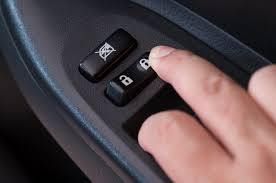Answers to Common Car Door Lock Repair Questions
Car door locks are essential for vehicle security, but when they malfunction, it can be a significant inconvenience. Whether you're dealing with a lock that won't latch, a key that's broken off in the lock, or other common issues, this guide will provide detailed answers to your questions and help you troubleshoot and fix these problems.
How Do I Fix a Door Lock That Doesn’t Latch?
If your car door lock doesn't latch properly, it can be due to misalignment or damage. Here's how you can address this issue:
- Check for Alignment: Open the door and inspect the latch and striker plate for alignment. If they don’t line up, the door won't latch properly.
- Adjust the Striker Plate: Use a screwdriver to loosen the screws on the striker plate. Move the plate slightly to align with the latch, then tighten the screws.
- Inspect for Damage: Examine the latch mechanism for any signs of wear or damage. If parts are broken or worn out, they may need to be replaced.
- Lubricate the Lock: Apply a lubricant to the latch mechanism to ensure smooth operation. Avoid using grease as it can attract dirt and grime.
How Do I Remove a Key That’s Broken Off in a Lock?
A broken key in a car door lock can be a tricky problem. Follow these steps to remove it safely:
- Use Needle-Nose Pliers: If part of the key is sticking out, use needle-nose pliers to gently pull it out. Be careful not to push the key further into the lock.
- Apply Lubricant: Spray a lubricant into the lock to reduce friction and make it easier to extract the broken key.
- Key Extractor Tool: Use a key extractor tool designed for removing broken keys. Insert the tool into the lock and hook the broken key, then gently pull it out.
- Contact a Locksmith: If the key is deeply lodged or you can't remove it, contact a professional locksmith for assistance.
How Do You Troubleshoot a Door Lock?
Troubleshooting a malfunctioning car door lock involves several steps:
- Test the Lock: Try locking and unlocking the door using both the key and the interior lock switch. Note any unusual resistance or sounds.
- Inspect the Lock Mechanism: Open the door panel to access the lock mechanism. Check for any loose or disconnected parts.
- Check the Fuses: Locate the fuse box and check if the fuse for the door lock is blown. Replace it if necessary.
- Examine the Wiring: Inspect the wiring connected to the lock for any signs of damage or corrosion. Repair or replace damaged wires.
- Test the Actuator: If your car has power locks, test the door lock actuator to ensure it's functioning correctly. Replace it if it's faulty.
How to Get a Car Door Unfrozen?
A frozen car door can be a common issue in cold weather. Here's how to deal with it:
- Apply Warm Water: Pour warm (not hot) water over the frozen lock and door edges to melt the ice. Wipe away excess water to prevent refreezing.
- Use a De-Icer Spray: Spray a commercial de-icer into the lock and around the door edges. These products are designed to quickly melt ice.
- Warm the Key: If the lock itself is frozen, warm the key with a lighter or hairdryer before inserting it into the lock.
- Avoid Force: Do not force the door open, as this can damage the lock or door seal. Be patient and allow the ice to melt.
Why Is My Automatic Car Door Lock Not Working?
If your automatic car door lock isn't working, there could be several reasons:
- Check the Battery: Ensure the car battery is charged. A weak or dead battery can affect the operation of automatic locks.
- Inspect the Key Fob: Replace the battery in your key fob and ensure it's functioning correctly. Try using a spare key fob if available.
- Examine the Actuator: The door lock actuator may be faulty. Test it by listening for a clicking sound when pressing the lock/unlock button. Replace it if needed.
- Check the Wiring: Inspect the wiring for any signs of damage or disconnection. Repair any faulty wiring to restore functionality.
How to Fix a Lock on a Car Door?
To fix a malfunctioning car door lock, follow these steps:
- Access the Lock Mechanism: Remove the interior door panel to access the lock mechanism. Be careful not to damage any components.
- Inspect the Lock Cylinder: Check the lock cylinder for any signs of wear or damage. If the cylinder is broken, replace it.
- Lubricate the Lock: Apply a graphite or silicone lubricant to the lock cylinder and other moving parts to ensure smooth operation.
- Test the Lock: Reassemble the door panel and test the lock to ensure it operates correctly. Make any necessary adjustments.

How Do I Fix a Sticky Car Door Lock?
If your car door lock is sticky, it can be frustrating to use. Here’s how to fix it:
- Clean the Lock: Use a can of compressed air to blow out any dirt or debris from the lock cylinder.
- Apply Lubricant: Spray a graphite or silicone lubricant into the lock cylinder. Avoid using oil-based lubricants as they can attract more dirt.
- Work the Key: Insert and remove the key several times to distribute the lubricant evenly inside the lock.
- Repeat as Needed: If the lock is still sticky, repeat the cleaning and lubricating process until it operates smoothly.
Why Is My Car Door Lock Making Noise?
A noisy car door lock can indicate a problem with the lock mechanism or actuator:
- Identify the Noise: Determine if the noise is coming from the lock cylinder, actuator, or another part of the door mechanism.
- Lubricate Moving Parts: Apply lubricant to the lock cylinder, actuator, and other moving parts to reduce friction and noise.
- Check for Loose Components: Inspect the door mechanism for any loose or worn components. Tighten or replace parts as needed.
- Replace the Actuator: If the actuator is making a loud noise, it may be faulty and require replacement.
How Do I Fix a Car Door Lock That Won’t Unlock?
If your car door lock won’t unlock, it can be a security issue. Here’s what to do:
- Check the Key: Ensure the key is not bent or damaged. Try using a spare key if available.
- Lubricate the Lock: Apply a lubricant to the lock cylinder to loosen any debris or corrosion that may be causing the issue.
- Inspect the Actuator: If your car has power locks, test the door lock actuator and replace it if it’s not working.
- Check the Lock Rod: Open the interior door panel and inspect the lock rod for disconnection or damage. Reconnect or replace it as needed.
How Do I Fix a Car Door Lock That’s Hard to Turn?
A car door lock that’s hard to turn can be caused by dirt, debris, or a worn key:
- Clean the Lock: Use compressed air to clean out any dirt or debris from the lock cylinder.
- Lubricate the Lock: Apply a graphite or silicone lubricant to the lock cylinder. Avoid using oil-based lubricants.
- Inspect the Key: Check the key for any signs of wear or damage. If the key is worn, consider getting a new one cut from the original key code.
- Replace the Lock Cylinder: If the lock is still hard to turn, it may be worn out and need replacement.
Conclusion
Dealing with car door lock issues can be frustrating, but understanding how to troubleshoot and fix these common problems can save you time and money. Whether you're facing a lock that doesn't latch, a broken key, or a malfunctioning automatic lock, this guide provides practical, step-by-step solutions.
Remember to stay calm, assess the situation, and use the appropriate tools and methods for each issue. And if you ever find yourself stuck, don't hesitate to contact a professional locksmith like Brother Locksmith for expert assistance. With these tips and a bit of patience, you'll be able to keep your car door locks functioning smoothly and securely.
Call Us Any Time!




